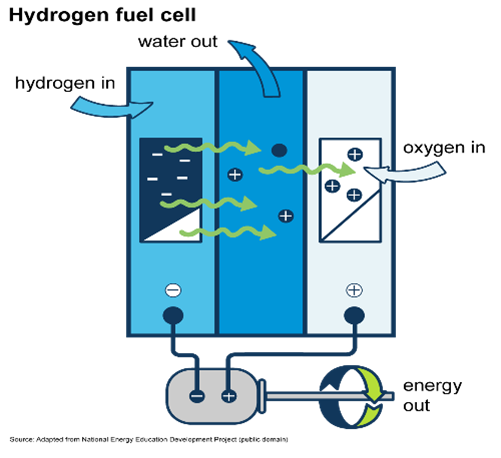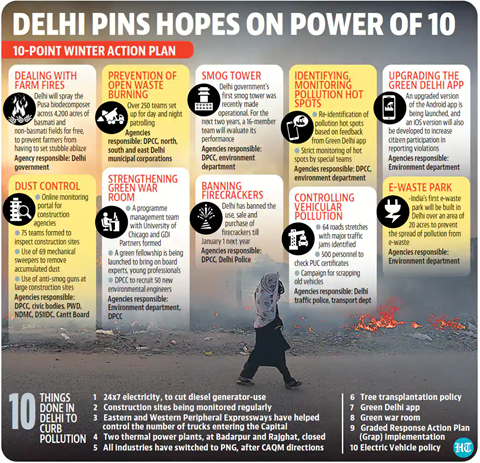Monday, 11th October 2021
Global Minimum corporate tax
In News
The OECD-G20 Inclusive Framework on Base Erosion and Profit Shifting (BEPS) was agreed by India and One hundred and thirty-six countries, representing more than 90% of global GDP.
About the News
- The move is part of an evolving consensus that big multinationals are funnelling profits through low-tax jurisdictions to avoid paying taxes.
- The Organisation for Economic Cooperation and Development (OECD), comprising mostly developed economies, has led talks on a minimum corporate tax rate for a decade. A multilateral convention is to be signed next year.
- Base erosion and profit shifting (BEPS) refers to tax planning strategies used by multinational enterprises that exploit gaps and mismatches in tax rules to avoid paying tax.
- The agreement effectively ratifies the OECD’s two-pillar package that aims to ensure that large multinational enterprises (MNEs) “pay tax where they operate and earn profits”.
What is the Two Pillar Framework?
- Pillar One:
- Under this Pillar, which will be signed in 2022 and be enforced from 2023, multinational enterprises with global turnover above 20 billion euros and pre-tax profit above 10 percent of revenue (known as super normal profit) will have to pay 25 percent of the profit before tax.
- The 25 percent of the profit before tax will be divided among countries on a nexus-based allocation system, which will be negotiated.
- Pillar One would ensure that large multinational tech companies like Amazon, Google and others pay more taxes in countries where they have customers or users regardless of where they operate from but may not have physical or intellectual property in all of those markets, which make it difficult to tax them.
- Pillar Two:
- It mandates a global minimum tax of 15 per cent.
- It does not seek to eliminate tax competition but puts multilaterally agreed limitations on it.
- It will apply to companies with revenue above 750 million euros and is estimated to generate around USD 150 billion in additional global tax revenues annually.
- It will be implemented from 2024.
Significance of the Framework
- Overhaul of the Tax Regime: The agreement is an overhaul of the present international tax regime (more than 100 years) and will change the rule of global profit allocation among taxing jurisdictions.
- Tackle tax Avoidance: It is part of an evolving consensus that big multinationals/tech companies are funneling profits through low-tax jurisdictions to avoid paying taxes. This neutralizes the benefits for companies to shift towards tax haven countries.
- Stable and transparent Tax regime: It secures a more certain and stable tax regime for multinationals and governments.
What will be the impact on India?
- Withdrawal of Digital tax: India may have to withdraw its digital tax equalization levy (Google Tax) by 2023 as all parties have agreed to remove Digital Services Taxes.
- Impact on investment: The minimum tax could harm the ability to attract investment with special lures like research and development credits and special economic zones that offer tax breaks to investors.
- Impact on sovereign function of taxation: It impinges on the sovereign function of taxation and tax policy of the country.
Sources:
New Helicopter Policy
In News
Civil Aviation Ministry has announced a new helicopter policy under which dedicated hubs and corridors would be established alongside landing charges and parking deposits abolished to boost commercial operations.
About the New Policy
- Dedicated Helicopter Acceleration Cell: A dedicated helicopter-acceleration cell will be set up in the Civil Aviation Ministry that will look at helicopter industry's issues and will serve as a resource to facilitate growth.
- No Landing Charges: Landing charges or parking deposits for heliports or helicopter companies have been done away with under the new policy.
- Adequate Training: Officers of Airports Authority of India (AAI) and Air Traffic Control (ATC) will engage with the helicopter industry stakeholders to train all individuals adequately regarding helicopter issues.
- Advisory Group: An advisory group has been set up in the Civil Aviation Ministry to discuss any pain points of the industry.
- Heli-Disha Booklet: A booklet named Heli-Disha containing all regulations and issues related to helicopter size, weight, operations, etc, would be given to every collector of every district of the country to create awareness.
- Heli-Seva Portal: A centralized Heli-Seva portal will be upgraded to a level so that all permissions for a helicopter flight could be granted online.
- Heli-Hubs: Four Heli-hubs- first at Juhu in Mumbai, second in Guwahati, third in Delhi and fourth at HAL airport in Bengaluru will be set up.
- Dedicated Corridors: 10 cities and 82 routes have been identified to develop helicopter corridors with the first three being Juhu-Pune-Juhu, Mahalakshmi race course-Pune-Mahalakshmi race course and Gandhinagar-Ahmedabad-Gandhinagar.
- Heliports to house Accident victims: Three expressways - Delhi-Bombay expressway, Ambala-Kotputli expressway and Amrisar-Bhatinda-Jamnagar expressway are chosen along which heliports would be set up for immediate evacuation of accident victims.
Sources:
Coal Shortage and Power Crisis
In News
It has been recently reported that over half of 135 coal-fired utilities, which supply more than half of India’s electricity, have fuel stocks to last just under three days.
About the News
- About: India’s thermal power plants have been currently facing a severe coal shortage, with a majority of the thermal stations having an average of four days of coal stock against a normative requirement to hold 15-30 days.
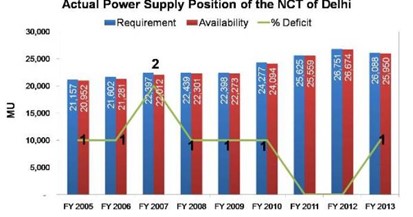
- Critical situation in Delhi: Of the five coal-fired thermal power plants that supply Delhi about 1,971MW electricity every day, at least one has completely run out of stock. The plant has no coal reserve to generate electricity for even one extra day.
- Of the remaining four, three had only a day of coal stocks, while the fourth had a reserve of four days.
- The Reasons for the current situation include:
- International prices of coal have surged, increasing the demand for local coal.
- Power demand, and therefore the derived demand for coal have increased sharply in the recent past.
- Inadequate procurement of coal by thermal plants.
- Heavy rainfall, especially in the coal-producing regions of Jharkhand, Odisha and West Bengal, has added to the problems.
- Other states including Punjab, Rajasthan, Tamil Nadu and Gujarat have also been raising concerns about the possible blackouts.
Steps taken to address this crisis
- Idle Plants: The Central government has issued guidelines under which the power plants with idle capacity shall sell unrequisitioned power in the spot market.
- Un-requisitioned power: Where the procurer has decided not to schedule power for any period, either full or part capacity, from the generating station with which he has signed the PPA (power purchase agreement), the generator shall be free to sell the unrequisitioned power in the power exchange.
- Any un-requisitioned power should to be despatched “in public interest” where there is a requirement in the grid by other users or consumers.
- Role of CIL: Increasing coal supply from state-owned Coal India Ltd, the key supplier of coal to thermal power plants, to help in a gradual build up of coal stocks in the near future.
Sources:
- Delhi stares at a power crisis, sends out SOS
- Amid coal supply shortfall, Ministry clears generators to sell unrequisitioned power
Image Source:
Water Crisis
In News
The UN WMO has recently released its report ‘2021 State of Climate Services: Water’, highlighting the need for urgent action to improve cooperative water management.
Context for the News
In 2018, the Conference of the Parties at the 24th Conference of the Parties to the United Nations Framework Convention on Climate Change (UNFCCC) called on the World Meteorological Organization (WMO) through its Global Framework for Climate Services (GFCS) to regularly report on the state of climate services with a view to “facilitating the development and application of methodologies for assessing adaptation needs”.
Water is a top adaptation priority in 79% of UNFCCC Parties’ NDCs.
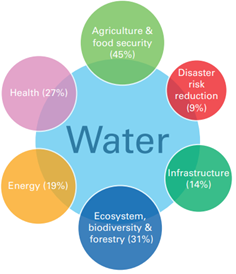
Why is Water Management a Need of the Hour?
- Water-related hazards have been increasing for the past 20 years: Between 1970 and 2019, 11,072 disasters have been attributed to weather-, water-, and climate-related hazards, involving 2.06 million deaths and US$ 3.6 trillion in economic losses34.
- Achieving SDG 6 by 2030 will require the current rates of progress to quadruple:3 billion people – or 25% of the global population – are already living in countries under water stress. Globally, a quarter of all cities are already water stressed and experience perennial water shortages.
- Needed in Human Development: Water is a key prerequisite for human development, yet only 0.5% of water on Earth is useable and available as freshwater. Water is indispensable and essential to human health, economic development, peace and security.
- Women are disproportionately affected by water scarcity and quality, climate change, and natural hazards
What are the Gaps in Water Management globally?
- IWRM: Despite Integrated Water Resources Management (IWRM) being seen as vital to achieving long-term social, economic and environmental well-being, 107 countries will still not have sustainably managed water resources by 2030, according to UNEP.
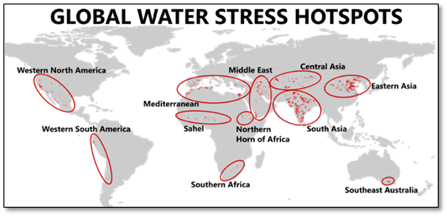
- Water data collection: There are significant gaps in water data collection. On average, data is not being collected for basic hydrological variables, such as water level and discharge, in 40% of WMO Member countries. There is lack of continuous, automatic sensor-based water level monitoring.
- Gaps in forecasting: End-to-end riverine flood forecasting and warning systems are absent or inadequate in 34% of WMO Members that provided data. End-to-end drought forecasting and warning systems are lacking or inadequate in 54% of WMO Members that provided data.
- Official development assistance (ODA): Although ODA for the water sector increased between 2015 and 2019, actual ODA disbursements to the water sector remained stable at US$ 8.8 billion, despite increased funding needed to meet targets under the SDG6.
- ODA is a means for implementing all aspects of SDG 6, including through investments in other sectors such as agriculture.

Recommendations for better Water Management
- Investments: Additional investments should be directed to LDCs in Africa and Asia regions, to establish and strengthen end-to-end warning and forecasting systems, enhance preparedness and build systems capacity for dissemination and communication of early warnings.
- Fill the gaps in the data collection: Observations of the hydrological cycle, producing real-time data, historical time series and aggregated data, are fundamental to deliver climate services for helping solve water challenges such as floods, droughts, water supply, governance, trans- boundary sharing, water quality or ecosystems. Therefore, Members need support to fill the gaps in the data collection of key hydrological variables.
- Water Services: Co-develop and operationalize climate services to better support adaptation in the water sector. There is also a pressing need for better monitoring and evaluation of socio-economic benefits of climate services, which is critical for sustaining systems and services and attracting investment, and which will help to upscale effective practices.
- Join the Water and Climate Coalition: This will lead to informed policy development for integrated water and climate assessments, solutions and services and benefit from a growing network of partners that develop and implement tangible, practical projects, programs and systems to improve hydro-climate services for resilience and adaptation.
- A gender transformative approach: As women are disproportionally affected by water crisis, the Global Water Partnership (GWP) suggests four action areas of intervention:
- Ensuring institutional leadership and commitment to making gender equality and inclusion a major goal for everyone in the water sector.
- Conducting gender and inclusion analysis at all levels;
- Adopting a practice of meaningful and inclusive participatory decision-making processes and partnerships; and
- Creating a level playing field with respect to access and control of resources such as land and water.

Conclusion: This past year has seen a continuation of extreme, water-related events. Millions of people were displaced, and hundreds were killed. But it is not just in the developing world that flooding has led to major disruption. Catastrophic flooding in Europe led to hundreds of deaths and widespread damage. Integrated Water Resources Management (IWRM) is vital to achieving long-term social, economic and environmental well-being.
Question: Discuss the need for better management of global water resources. What can be the steps taken in this direction?
Sources:
This Day in History - International Day of the Girl Child
On October 11, 2011, United Nations General Assembly (UNGA) declared October 11 as the International Day of the Girl Child, to recognize girls’ rights and the unique challenges girls face around the world. Earlier to that, in the year 1995, at the World Conference on Women in Beijing, countries unanimously adopted the Beijing Declaration and Platform for Action for advancing the rights of not only women but girls. UNICEF has declared the theme for International Day of the Girl 2021 as “Digital generation Our generation.” Earlier this year, the Generation Equality Forum (GEF) of UN Women, had launched a five-year plan for bolder solutions to gender inequality. India with NEP, Samagra Shiksha Abhiyaan, Ministry of Women and Child Development’s Beti Bachao, Beti Padhao (BBBP) scheme and Khelo India Scheme hopes to make progress in this direction.

Sources:
Image of the Day - Nobel Peace Prize 2021
Maria Ressa of the Philippines and Dmitry Muratov of Russia received the Nobel Peace Prize. Maria Ressa, an investigative journalist in 2012 co-founded Rappler, a digital media platform for investigative journalism, which she continues to head. Dmitry Muratov has “has for decades defended freedom of speech in Russia under increasingly challenging conditions” said The Nobel Committee. In 1993, he co-founded Novaja Gazeta. The Nobel Peace Prize is awarded by a committee elected by the Norwegian Parliament (Stortinget).

Sources:
Indian Space Association
- Context: The Prime Minister will be launching the industry body Indian Space Association (ISpA)
- ISpA represents homegrown and global corporations with advanced capabilities in space and satellite technologies. It is the premier industry association of companies, which aspires to be the collective voice of the Indian space industry.
- It will undertake policy advocacy and engage with all stakeholders in the Indian space domain, including the government and its agencies.
- Its founding members include Bharti Airtel, Larsen & Toubro, Nelco (Tata Group), OneWeb, Mapmyindia, Walchandnagar Industries and Ananth Technology Limited with Godrej, Hughes India, BEL etc as other core members.
- This will make India self-reliant, technologically advanced and a leading player in the space arena.

Sources:
- PM Modi to launch industry body Indian Space Association on Monday
- PM Modi to launch Indian Space Association today
Image Source:
Light Utility Helicopter
- Context: Hindustan Aeronautics Limited (HAL) has set August 2022 as the deadline for carrying out the light utility helicopter’s (LUH) maiden test flight.
- LUH is a new generation helicopter in the 3-Ton class incorporating state-of-the-art technology features like:
- Glass cockpit with Multi-Function Displays (MFD) and
- Powered by single Turbo Shaft engine with sufficient power margin for high altitude missions.
- The helicopter will be capable of flying at 220 Kmph; service ceiling of 6.5 Km and a range of 350 Km with 500 kg payload.
- LUH will replace the army and Indian Air Force’s ageing fleets of Cheetah and Chetak helicopters, whose safety record has been blemished by a number of crashes.
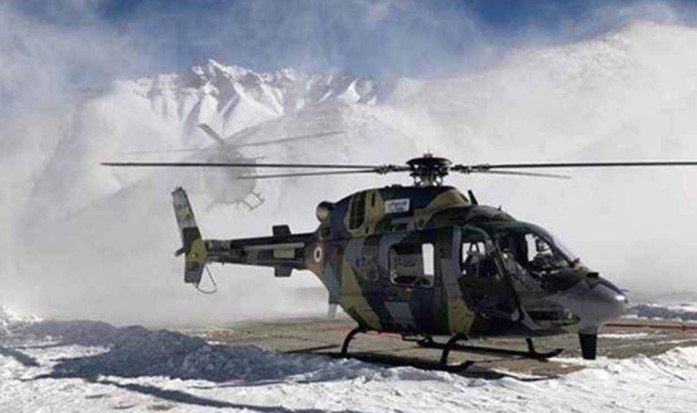
Source:
Image Source:
Kanyakumari clove
- Context: Clove from Kanyakumari has obtained the Geographical Indication (GI) Tag recently.
- Clove is one of the prominent spice crops of the district and is grown on 760 hectares in areas of Maramalai, Blackrock and Velimalai in the Western Ghats of the Veerapuli Reserve Forests and Mahendragiri.
- The hilly regions of Kanyakumari benefit from both the south-west and north-east monsoons. The ‘sea mist’ in addition provides the moisture needed for the crop and the black soil rich in organic nutrients make the region ideal for clove cultivation.
- While the typical volatile oil content is about 18%, the volatile oil content in the Kanyakumari clove buds is 21%, resulting in 86% of eugenol (eugenol acetate is a compound found in the essential oil of clove) that gives it better aroma and flavour.
- The clove bud and its oils are also used in the medical, pharmaceutical and perfumery industries.
- The district accounts for 73% of the area under clove in Tamil Nadu.

Source:
Image Source:
Safe Cities Index 2021
- Context: The fourth edition of the Safe Cities Index 2021 was released from The Economist Intelligence Unit, sponsored by NEC Corporation.
- The report ranks 60 cities across 76 indicators covering digital, health, infrastructure, personal and environmental security under 5 domains.
- Denmark's Copenhagen has been ranked the world's safest city.
- Toronto (Canada), Singapore, Sydney (Australia) and Tokyo (Japan) were among the top five safest cities in the same order.
- Delhi and Mumbai from India had secured the 48th and 50th rank respectively in the index.

Source:
- Safe Cities Index 2021
- Safe Cities Index 2021: Copenhagen is the World’s Safest City, Two Indian Cities Also on List
Image Source:
India needs a carbon policy for agriculture- IE
Essence: In the upcoming COP26 in Glasgow, India shall reiterate that the focus should be on climate finance and transfer of green technologies at low cost. The argument that the developed countries should take the onus as they have collectively emitted more than their estimated emission allowances shall create some noise but it cannot be neglected that India is home to 22 of 30 most polluted cities in the world. India needs to make changes in order to achieve the Nationally Determined Contributions (NDCs).
India needs a carbon policy for agriculture in place which should aim not only to reduce its emissions but also reward farmers through carbon credits which should be globally tradable. The government should incentivise and give subsidies on drips for fertigation, switching away from rice to corn or less water-intensive crops, and promoting soluble fertilisers at the same rate of subsidy as granular urea.
Why you should read this article?
- This article gives an insight on the urgency for creation of carbon policy on agriculture and status of India as a global emitter.
Source:
How Air India lost sight of its flight path-BL
Essence: Tatas, the original owners of Air India, bought it back for ₹18,000 crore and the government will keep the cash balance and debt of Air India. The reasons for the downfall are faulty decisions on aircraft purchases, faulty aircraft configuration, inability to offer direct non-stop flights from major growth centres, failed marriage with Indian Airlines, huge salaries to its employees, lack of professional management and failure of asset monetisation. Air India under JRD Tata followed the lassez faire style of management and was a pride of India for the quality of services and treatment of its employees. With the management of Air India back with the Tatas lets hope it will become profitable with excellent customer service.
Why you should read this article?
- To understand about the details of privatiation of Air India.
- To know about the reasons for the failure of Air India.
- To know about the history of Air India when it was with the Tata group.
Source:
A ‘Taiwan flashpoint’ in the Indo-Pacific- TH
Essence: The article talks about the history as well as the turning point of the rivalry between the USA and the China over the Taiwan issue. China has been constantly following its carrot and stick policy for the reunification of Taiwan with the mainland. Taiwan is important for China not only from a geopolitical point but also from economic concerns since there have been heavy investments from Taiwan businessmen in Chinese infrastructure. Also, China abandoning the ‘One Country Two Systems’ formula and its hard-line policies in Hong Kong have made the general public against China. There has also been seen a diplomatic relationship between the Biden’s government and Taiwan. Thus, it becomes imperative for China to look forward to Taiwan in the Indo-Pacific where one stand is the AUKUS and on the other end Quad of which India is a member.
Why you should read this article?
- To understand the geostrategic and geoeconomics importance of the Taiwan region for PRC.
- To understand Taiwan’s importance for China to withstand the AUKUS alliance and the Quad.
- To understand how the Taiwan issue is important for India to carry out an Indo-Pacific strategy.
Source:
A mill’s initiative to address drought
Background:
- Annual rainfall recorded in drought-prone Marathwada region, is only around 780 mm.
- Farmers have to rely on groundwater to tide over the hot summer months and keep their crops alive.
The initiative:
- Initiator: A private mill located in Kalamb taluka of Osmanabad district, managed to bring more than 6,000 hectares of its total 10,000 hectares of sugarcane area under drip irrigation.
- Incentives: The mill’s decision to pay Rs 10/quintal more to farmers who grew their crop with drip irrigation helped the initiative.
- Efforts from the mill: Financial benefit and constant follow-up by the mill has managed to bring 60 per cent of the total cane area under drip irrigation.
- Water management: Focus and motivation to use drip irrigation instead of gravity/flow irrigation.

Source:
Share the article
Get Latest Updates on Offers, Event dates, and free Mentorship sessions.

Get in touch with our Expert Academic Counsellors 👋
FAQs
UPSC Daily Current Affairs focuses on learning current events on a daily basis. An aspirant needs to study regular and updated information about current events, news, and relevant topics that are important for UPSC aspirants. It covers national and international affairs, government policies, socio-economic issues, science and technology advancements, and more.
UPSC Daily Current Affairs provides aspirants with a concise and comprehensive overview of the latest happenings and developments across various fields. It helps aspirants stay updated with current affairs and provides them with valuable insights and analysis, which are essential for answering questions in the UPSC examinations. It enhances their knowledge, analytical skills, and ability to connect current affairs with the UPSC syllabus.
UPSC Daily Current Affairs covers a wide range of topics, including politics, economics, science and technology, environment, social issues, governance, international relations, and more. It offers news summaries, in-depth analyses, editorials, opinion pieces, and relevant study materials. It also provides practice questions and quizzes to help aspirants test their understanding of current affairs.
Edukemy's UPSC Daily Current Affairs can be accessed through:
- UPSC Daily Current Affairs can be accessed through Current Affairs tab at the top of the Main Page of Edukemy.
- Edukemy Mobile app: The Daily Current Affairs can also be access through Edukemy Mobile App.
- Social media: Follow Edukemy’s official social media accounts or pages that provide UPSC Daily Current Affairs updates, including Facebook, Twitter, or Telegram channels.

